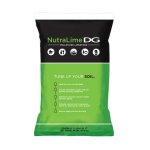St. Phatty
Active member
I finally found my bag of Lime.
Too late to mix into a soil mix.
But I am going to be giving my plants compost tea using powdered chicken manure.
It has always proved to be a little hot, i.e. acidic.
I was thinking one heaping Tablespoon of Lime, in 4 gallons of water.
Then to add maybe 12 ounces, by Volume, of Chicken Manure.
Just pretend it's bagged Bat Guano.
If you were mixing up 5-5-5 Bat Guano in a compost tea, what would be your recipe ?
Too late to mix into a soil mix.
But I am going to be giving my plants compost tea using powdered chicken manure.
It has always proved to be a little hot, i.e. acidic.
I was thinking one heaping Tablespoon of Lime, in 4 gallons of water.
Then to add maybe 12 ounces, by Volume, of Chicken Manure.
Just pretend it's bagged Bat Guano.
If you were mixing up 5-5-5 Bat Guano in a compost tea, what would be your recipe ?



